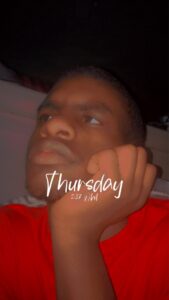

“We’ve had to pivot to figure out how to stay alive as an organization,” Jay said. “Every cent we bring in right now is going directly toward paying local artists to produce content that will be free for underserved people.”
An Oakland-based hip hop artist and grassroots organizer, or “raptivist,” Jay hopes to decondition biases held against people of color that have been formed through toxic media narratives. Today, three companies—Sony Music Group, Universal Music Group, and Warner Music Group—own an overwhelming majority of hip hop’s platform. Jay said these companies regularly produce music that glorifies sexism, drug abuse, gang violence, materialism, and homophobia, then market it to their most loyal demographic: white men. Since the way corporate media portrays rap music often contributes to the formation of narratives that negatively reflect the Black community, it can fuel negative stereotypes that are then carried into society, he said.
“A lot of people learned what it meant to be Black through hip hop in the late ‘80s, early ‘90s,” Jay said. “Even white folks learned what it meant to be Black—to some extent—from propaganda. Whoever controls the narrative that your children have access to is king.”
Hip Hop for Change teaches students the history of hip hop and hip hop culture, emphasizing its “root values of peace, love, unity, and having fun,” according to the organization’s website. Their program shows students how to channel their feelings and creative impulses through visual art, music, and movement, and has been especially helpful for students offhandedly labeled as “problematic.”
“Some teachers will give us disclaimers about students when we come in and they’ll say, ‘These kids are kind of crazy,’” Jay said. “But then after, they’ll say things like, ‘Wow. I’ve never seen these kids sit down like that and just listen.’”
Photo courtesy of Sarah Arnold
Hip Hop for Change’s curriculum is much more involved than simply teaching students to dance and create art. One of their biggest hurdles involves dismantling the way Black and brown forms of expression are perceived by society and informing people that there’s a way to make a living off of it.
“Why do people think they can make money doing ballet and not breakdance? Why do people think they can make money as a graphic designer but not as a graffiti artist? That sounds like racism and white supremacy to me. We don’t have financial efficacy within our own cultural expressive forms because they’re deemed as less-than,” Jay said.
Though the organization teaches students and adults of all ages, Jay said the “sweet spot” is students in middle school, who seem to be the most receptive to the material. Sharon, a seventh grader at Edna Brewer Middle School in Oakland, said she has been inspired to rap ever since Hip Hop for Change came to her school last year. She said they taught her class the basics of hip hop, graffiti, and breakdance, then broke them up into groups to write rap lyrics.
“I made a new rap that was really cool—well, I thought it was really cool—and then I realized that I really liked to rap,” Sharon said. “[My friends] gave me feedback and told me that they liked it, so I showed it to a lot of people.”
Since then, Sharon said she has continued to express herself through rap music, writing about her school days and her experience under quarantine—and she’s not the only one.
“I think there are some other students who are still working on beats and stuff,” she said.
Hip Hop for Change’s curriculum spotlights the work of Black and brown activists and artists, but that doesn’t mean it’s only intended for students of color. Their ultimate goal is cross-cultural communication through education and creativity.
“I love teaching young suburban white kids because they have so many misconceptions about what the hood is,” Jay said. “I love going into [white] communities and telling these kids, ‘Yo, what you’re seeing on television about Black people—that’s fake. It’s not representative of the Black experience or the hood.’ It’s not my responsibility as a Black man [to teach white kids about the hood], but I think it’s my duty and obligation as a hip hop educator.”
Jay makes it clear that his overarching goal is not to be reactionary to white supremacy. Instead, he wants kids to access hip hop and art in a way that helps them have fun while discovering their value and worth. During the pandemic, Hip Hop for Change is offering free online educational courses so that people can enjoy the material until the virus is quelled. In the meantime, Jay is hoping the organization can pull in enough resources to stay afloat while continuing to teach young minds how to use hip hop as a vehicle for activism and self-expression.





